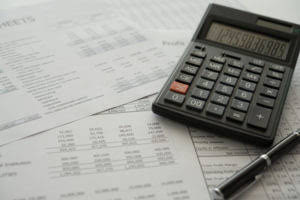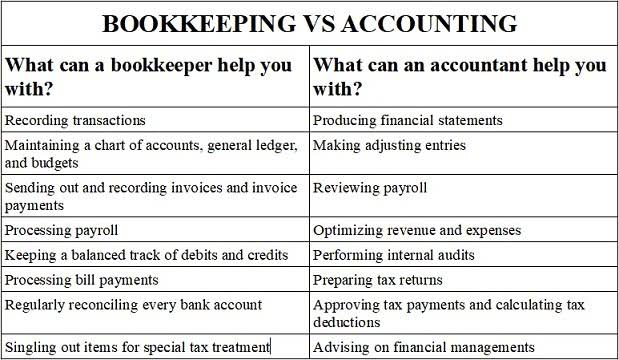
Depreciable property can include vehicles, real estate (except land), computers, office equipment, machinery, and heavy equipment. So, if you use an accelerated depreciation method, then sell the property at a profit, the IRS makes an adjustment. They take the amount you’ve written off using the accelerated depreciation method, compare it to the straight-line method, and treat the difference as taxable income. In other words, it may increase your tax bill in the year of sale. There are several ways to depreciate assets for your books or financial statements, but the amount of depreciation expense on your books or financial statements may not be the same as what you deduct on your tax return.
Part V: Listed property
If ACRS or MACRS does not apply, you can use one of these methods. The straight line and declining balance methods discussed in this section are not figured in the same way as straight line or declining balance methods under MACRS. If you acquire personal property that has a useful life of 3 years or more, you can use an amount for salvage value that is less than your actual estimate.
Depreciate buildings, not land
- Your item of listed property is listed property because it is not used at a regular business establishment.
- In April, you bought a patent for $5,100 that is not a section 197 intangible.
- You did not claim a section 179 deduction and the property does not qualify for a special depreciation allowance.
- To find a clinic near you, visit IRS.gov/litc or see IRS Publication 4134, Low Income Taxpayer Clinic List PDF.
- Double declining balance depreciation is an accelerated depreciation method.
- The kinds of property that you can depreciate include machinery, equipment, buildings, vehicles, and furniture.
Otherwise, you can go to irs.gov/orderforms to order current and prior-year forms and instructions. Therefore, it would be helpful if you would include your daytime phone number, including the area code, in your correspondence. This property will eventually become less valuable or even obsolete over time. The number of years over which the basis of an item of property is recovered.
- It’s an accounting technique that enables businesses to recover the cost of fixed assets by deducting them from their profits.
- To figure a depreciation deduction, you multiply the prescribed percentage for the recovery class by the unadjusted basis of the recovery property.
- Generally, if you hold business or investment property as a life tenant, you can depreciate it as if you were the absolute owner of the property.
- Whether the use of listed property is for the employer’s convenience must be determined from all the facts.
- For tax depreciation, different assets are sorted into different classes, and each class has its own useful life.
Section 1231 Property: Definition, Examples, and Tax Treatment
On April 28, 1985, you bought and placed in service a rental house. Because the house was placed in service after June 22, 1984, and before May 9, 1985, it is 18-year real property. Your deduction for 1985 through 2003 is shown in the following table. The ACRS percentages for low-income housing real property, like the regular 15-year real property percentages, depend on when you placed the property in service. In Table 2 or 3 at the end of this publication in the Appendix, find the month in your tax year that you first placed the property in service as rental housing. Use the percentages listed under that month for each year of the recovery period.
Investment and Self-employment taxes done right
- Under MACRS, Tara is allowed 4 months of depreciation for the short tax year that consists of 10 months.
- So, if you use an accelerated depreciation method, then sell the property at a profit, the IRS makes an adjustment.
- Figure your gain, loss, or other deduction resulting from the disposition in the manner described earlier under Abusive transactions.
- You then prorate this amount to the 5 months in 1995 during which it was rented.
- An estimated value of property at the end of its useful life.
- But, in reality, section 1245 property is merely section 1231 property that has been depreciated or amortized.
- Businesses use accelerated methods when dealing with assets that are more productive in their early years.
The class for your property was determined when you began to depreciate it. Any additions or improvements placed in service after 1986, including any components of a building (plumbing, wiring, storm windows, etc.) are depreciated using MACRS, discussed in chapter 4 of Pub. It does not matter that the underlying property is depreciated under ACRS or one of the other depreciable property examples methods. Any additions or improvements placed in service after 1986, including any components of a building (such as plumbing, wiring, storm windows, etc.), are depreciated using MACRS, discussed in chapter 4 of Pub. Depreciation you’d already claimed would be taxed along with your other sources of ordinary income, in this case, in the year the change occurred.

The basis used for figuring depreciation is the same as the basis that would be used for figuring the gain on a sale. However, if you acquire property in some other way, such as inheriting it, getting it as a gift, or building it yourself, you have to figure your original basis in a different way. The law provides a special rule to avoid the calculation of gain on the disposition of assets from mass asset accounts. A mass asset account includes items usually minor in value in relation to the group, numerous in quantity, impractical to separately identify, and not usually accounted for on a separate basis, but on a total dollar value. Examples of mass assets include minor items of office, plant, and store furniture and fixtures.


This tool lets your tax professional submit an authorization request to access your individual taxpayer IRS online account. Go to IRS.gov/Account to securely access information about your federal tax account. The IRS is committed to serving taxpayers with limited-English-proficiency (LEP) by offering OPI services.

Leave a comment